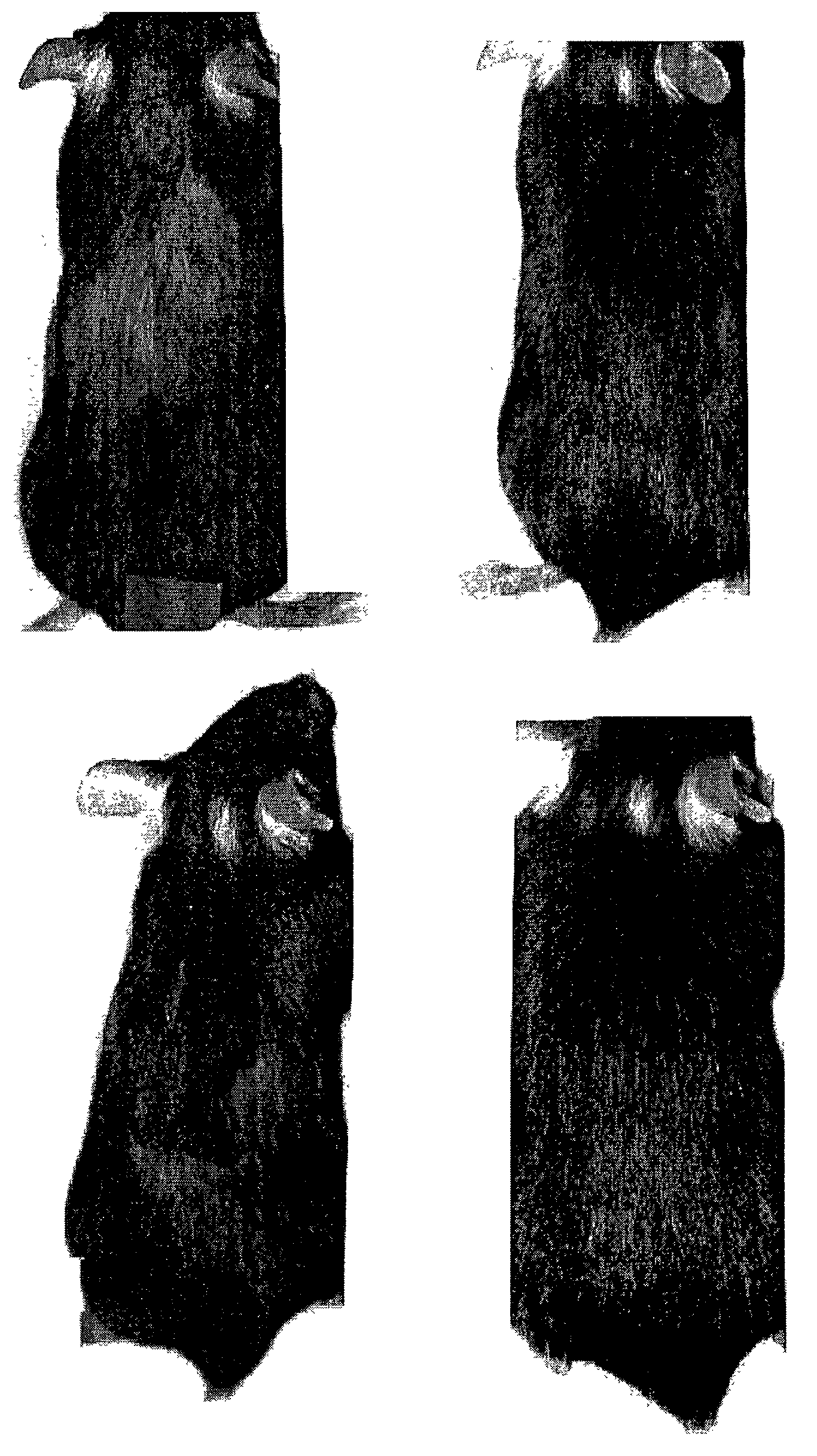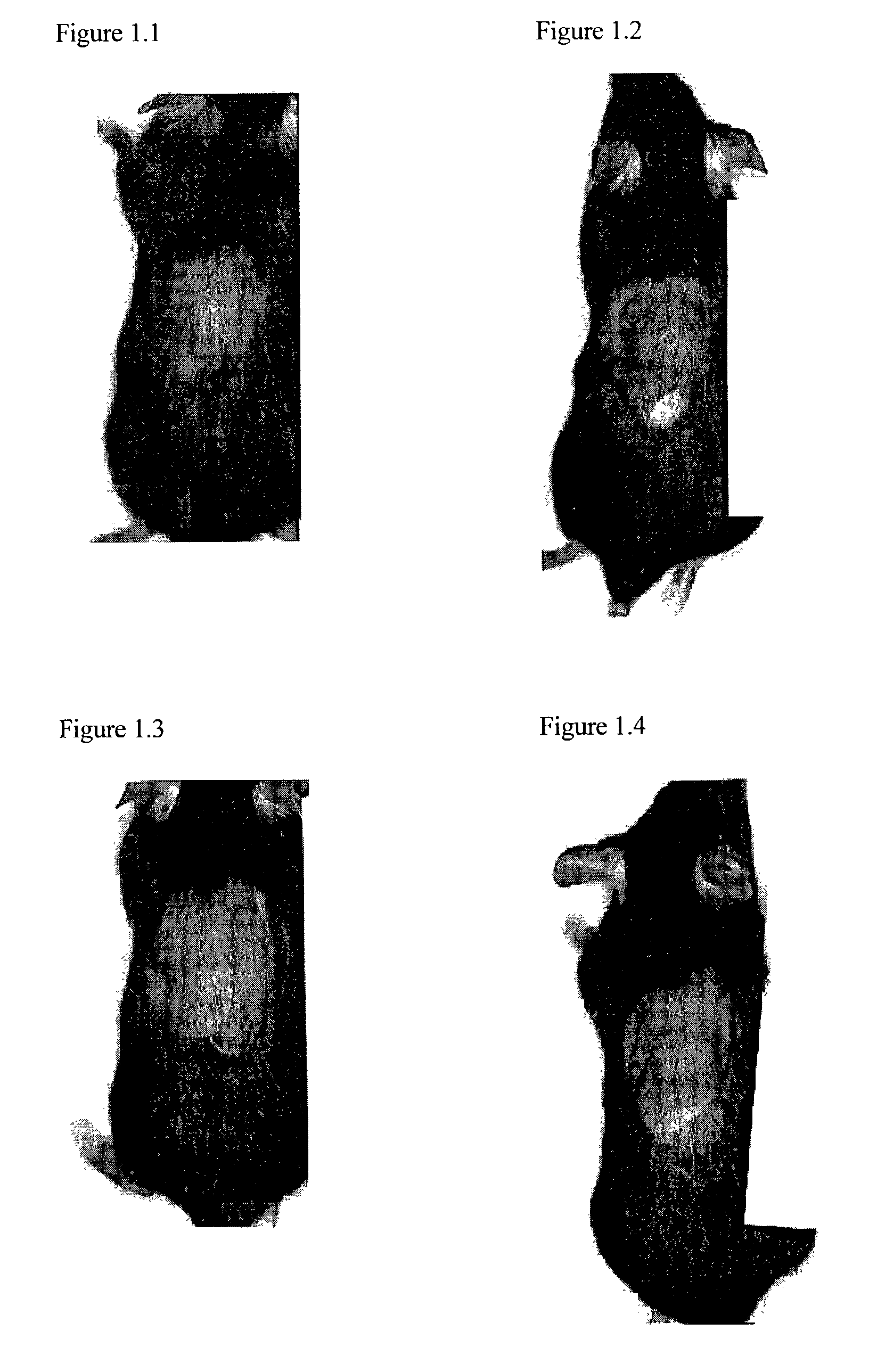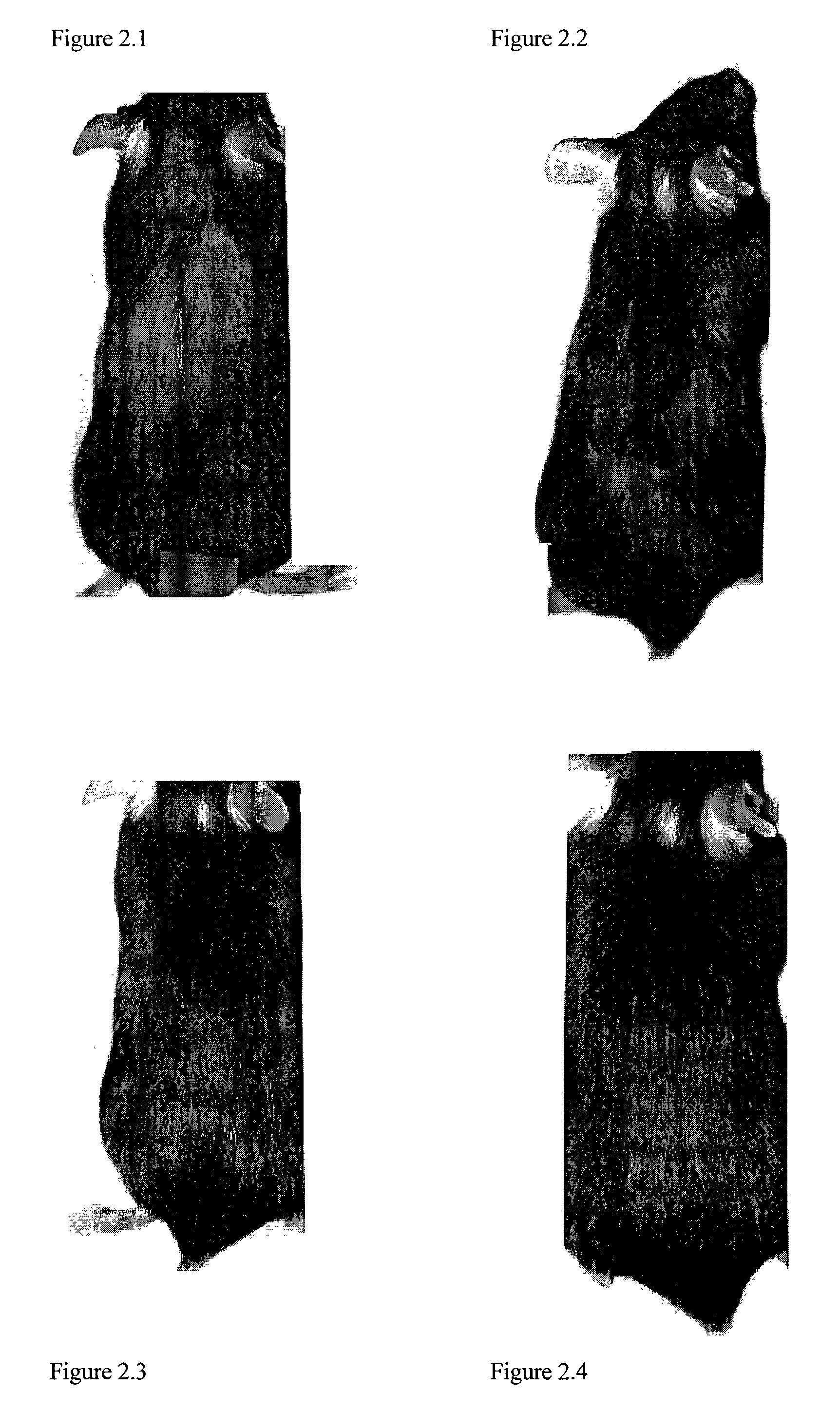Photodynamic therapy for the treatment of hair loss
a technology of photodynamic therapy and hair loss, applied in the field of photodynamic therapy, can solve the problems of minimal treatment effect, inconvenient use, and daily administration, and achieve the effects of stimulating hair growth, restoring hair growth, and restoring hair growth
- Summary
- Abstract
- Description
- Claims
- Application Information
AI Technical Summary
Benefits of technology
Problems solved by technology
Method used
Image
Examples
example 1
Photodynamic Therapy Treatment of C57BL / 6 Mice with Alopecia of Unknown Etiology
[0101]C57BL / 6 mice used in this example were purchased from Jackson Laboratories (Bar Harbor, Me.). After 4 weeks of housing some of the C57BL / 6 mice spontaneously developed a hair loss condition which resulted in large bald patches (see FIG. 1.1) at 12 to 14 weeks of age. One of these animals was sacrificed and skin samples were sent for histopathological evaluation. The skin sample showed no evidence of infection according to a veterinarian's histopathological examination. The condition was diagnosed as alopecia of unknown etiology. The presence of an undefined “mononuclear cell infiltrate” was noted within the affected skin and, without being bound by theory, may indicate an autoimmune etiology for alopecia in the mouse.
[0102]Eight mice that were developing hair loss were chosen. Four mice were randomly picked for the PDT treatment while the remaining four served as untreated controls. PDT consisted o...
example 2
PDT-induced Stimulation of Hair Growth using Topically-applied Photosensitizer
[0104]To prepare QLT 0074-containing ointment, QLT 0074 photosensitizer was dissolved in glacial acetic acid to solubilize it. The solution was then frozen in a dry ice / isopropanol bath and the acetic acid was removed by lyophilization. The resultant material was a fine fluffy powder. Analytical testing of the cryodessicated QLT 0074 indicated that the process did not cause degradation. The ointment base was prepared by first warming polyethylene glycol 200 (PEG 200) to 80–90° C. with stirring. Polyethylene glycol 3350 (PEG 3.35K) was then added with stirring, followed by oleyl alcohol, and then diethylene glycol monoethyl ether. Stirring was continued until the solution was clear. The ointment base was cooled to approximately 50° C., and the QLT 0074 was added with stirring. Stirring was continued as the mixture cooled, until a homogenous paste was achieved. The ointment contained the following proportion...
example 3
Optimization of Irradiation Dose and Timing for Photodynamic Treatment of Alopecia Areata after Intravenous Injection of Photosensitizer
[0115]This example examines the effect of different irradiation protocols on PDT treatment of alopecic mice as described above.
[0116]Alopecic mice are divided into control and treatment groups. The treatment mice are injected with verteporfin in a lipid-based formulation at 1 mg / kg of body weight, and the control group are mock injected. Mice from both groups are exposed to red light at the following doses: 1, 2, 5, 10 and 20 J / cm2 light LED at 1 hour post-injection, in a manner as described above in Example 1. Two additional PDT treatments are administered on days 7 and 14 post photosensitizer administration. All mice are monitored over a 5 week period, photographed pre-treatment and on days 6, 13, 20, 27, and 34 post irradiation, and with biopsies taken for histopathological analysis.
[0117]In a separate experiment, alopecic mice are divided into c...
PUM
| Property | Measurement | Unit |
|---|---|---|
| wavelength | aaaaa | aaaaa |
| time | aaaaa | aaaaa |
| time | aaaaa | aaaaa |
Abstract
Description
Claims
Application Information
 Login to View More
Login to View More - R&D
- Intellectual Property
- Life Sciences
- Materials
- Tech Scout
- Unparalleled Data Quality
- Higher Quality Content
- 60% Fewer Hallucinations
Browse by: Latest US Patents, China's latest patents, Technical Efficacy Thesaurus, Application Domain, Technology Topic, Popular Technical Reports.
© 2025 PatSnap. All rights reserved.Legal|Privacy policy|Modern Slavery Act Transparency Statement|Sitemap|About US| Contact US: help@patsnap.com



